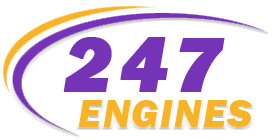How Does The Availability Of Parts Affect The Reconditioning Of A Ford Ranger Engine?
Reconditioning a Ford Ranger engine is a meticulous process that requires attention to detail, quality workmanship, and, crucially, the availability of the right parts. When it comes to engine reconditioning, the ease of sourcing parts can significantly affect the timeline, cost, and overall success of the project. We explores how the availability of parts plays a pivotal role in the reconditioning of a Ford Ranger engine, covering various aspects such as quality, cost-effectiveness, and supply chain dynamics.
The Role of Part Availability in the Reconditioning Process
The availability of parts is the backbone of any engine reconditioning process. When parts are readily available, the reconditioning of a Ford Ranger engine can proceed smoothly without unnecessary delays. Parts such as pistons, camshafts, gaskets, and timing chains must be in good supply to ensure that the engine is rebuilt to factory specifications. If any of these critical components are scarce or difficult to source, the entire process can be stalled, leading to extended downtime for the vehicle and potential increases in labor costs.
Moreover, the availability of parts directly affects the choice between reconditioning and full engine replacement. If parts for the Ford Ranger engine are not readily available, the decision might lean toward replacing the engine entirely with a new or reconditioned unit. This highlights the importance of a well-established supply chain in the reconditioning industry.
Quality and Consistency of Available Parts
The quality and consistency of parts are crucial when reconditioning a Ford Ranger engine. Even when parts are available, they must meet the necessary standards to ensure that the reconditioned engine performs as expected. Inferior parts can lead to subpar engine performance, reduced longevity, and even potential failure. This is why reconditioners often rely on trusted suppliers who provide OEM (Original Equipment Manufacturer) parts or high-quality aftermarket alternatives that match or exceed the original specifications.
Inconsistent availability of quality parts can result in a patchwork of components from various suppliers, which may not work harmoniously together. This can compromise the integrity of the reconditioned engine, leading to customer dissatisfaction and potential reputational damage for the reconditioning service provider. Therefore, the availability of consistent, high-quality parts is essential for the successful reconditioning of a Ford Ranger engine.
Cost Implications of Part Availability
The availability of parts directly impacts the cost of reconditioning Ford Ranger engine. When parts are readily available, their prices tend to be stable and predictable, allowing reconditioners to offer competitive pricing for their services. However, when parts are scarce, prices can skyrocket due to supply and demand dynamics, which can significantly increase the overall cost of reconditioning.
For instance, if a specific component of the Ford Ranger engine is in short supply, the cost of that part may rise, leading to higher expenses for both the reconditioner and the customer. In some cases, the increased cost of parts may push the total cost of reconditioning close to or even above the cost of a complete engine replacement, making the latter option more appealing to customers. This demonstrates how part availability can influence the financial feasibility of engine reconditioning.
The Impact on Turnaround Time
Turnaround time is a critical factor in the Reconditioning Ford Ranger engine, and it is heavily influenced by the availability of parts. When all necessary parts are in stock and easily accessible, the reconditioning process can proceed without interruption, leading to quicker completion times. This is particularly important for customers who rely on their vehicles for daily use or business operations, as extended downtime can result in significant inconvenience or loss of income.
Conversely, when parts are difficult to source or must be ordered from distant suppliers, the reconditioning process can be delayed, sometimes by several weeks. These delays can frustrate customers and potentially lead them to seek alternative solutions, such as purchasing a reconditioned engine that is already available or opting for an engine replacement. The ability to supply and fit parts quickly and efficiently is therefore a key factor in the success of an engine reconditioning service.
The Role of Supply Chains in Parts Availability
The availability of parts for reconditioning a Ford Ranger engine is closely tied to the effectiveness of supply chains. A robust and well-managed supply chain ensures that parts are readily available when needed, minimizing delays and keeping costs under control. This involves maintaining strong relationships with multiple suppliers, both local and international, to ensure a steady flow of parts into the reconditioning facility.
Supply chain disruptions, such as those caused by global events, transportation issues, or changes in trade policies, can have a significant impact on the availability of parts. For example, a disruption in the production of specific engine components in a key manufacturing region could lead to shortages worldwide, affecting reconditioning services across the globe. Therefore, supply chain resilience is critical to maintaining the availability of parts for Ford Ranger engine reconditioning.
The Influence of Technological Advancements on Part Availability
Technological advancements in manufacturing and distribution have the potential to improve the availability of parts for reconditioning Ford Ranger engines. For instance, advances in 3D printing technology could enable on-demand production of certain engine components, reducing dependence on traditional supply chains and making it easier to obtain rare or obsolete parts.
Additionally, improvements in inventory management systems and predictive analytics can help reconditioners forecast demand for specific parts more accurately, ensuring that they are stocked in advance. These technological tools can streamline the supply and fit process, reducing the risk of delays due to part shortages and enhancing the overall efficiency of the reconditioning process.
Balancing Part Availability with Environmental Considerations
The reconditioning of a Ford Ranger engine is not only a cost-effective alternative to engine replacement but also an environmentally friendly option. However, the environmental benefits of reconditioning can be compromised if parts availability leads to the use of substandard or less eco-friendly components. Reconditioners must balance the need for readily available parts with the commitment to using environmentally responsible materials and processes.
For example, sourcing parts made from recycled or sustainable materials can reduce the environmental impact of the reconditioning process. Additionally, ensuring that parts are sourced from suppliers who adhere to high environmental and ethical standards can enhance the overall sustainability of the service. By prioritizing both part availability and environmental responsibility, reconditioners can offer a service that benefits both customers and the planet.
Conclusion
The availability of parts is a critical factor in the successful reconditioning of a Ford Ranger engine. It influences the quality, cost, and turnaround time of the reconditioning process, as well as the overall sustainability of the service. A reliable supply chain, consistent access to high-quality parts, and the integration of technological advancements are all essential components in ensuring that the reconditioning process meets customer expectations and industry standards. By understanding and addressing the challenges associated with part availability, reconditioners can continue to provide a valuable service that keeps Ford Ranger engines running smoothly and efficiently. Whether considering Engine Replacement, Reconditioned Engines, or the Supply and fit process, the availability of parts remains a fundamental aspect of the automotive reconditioning industry.

